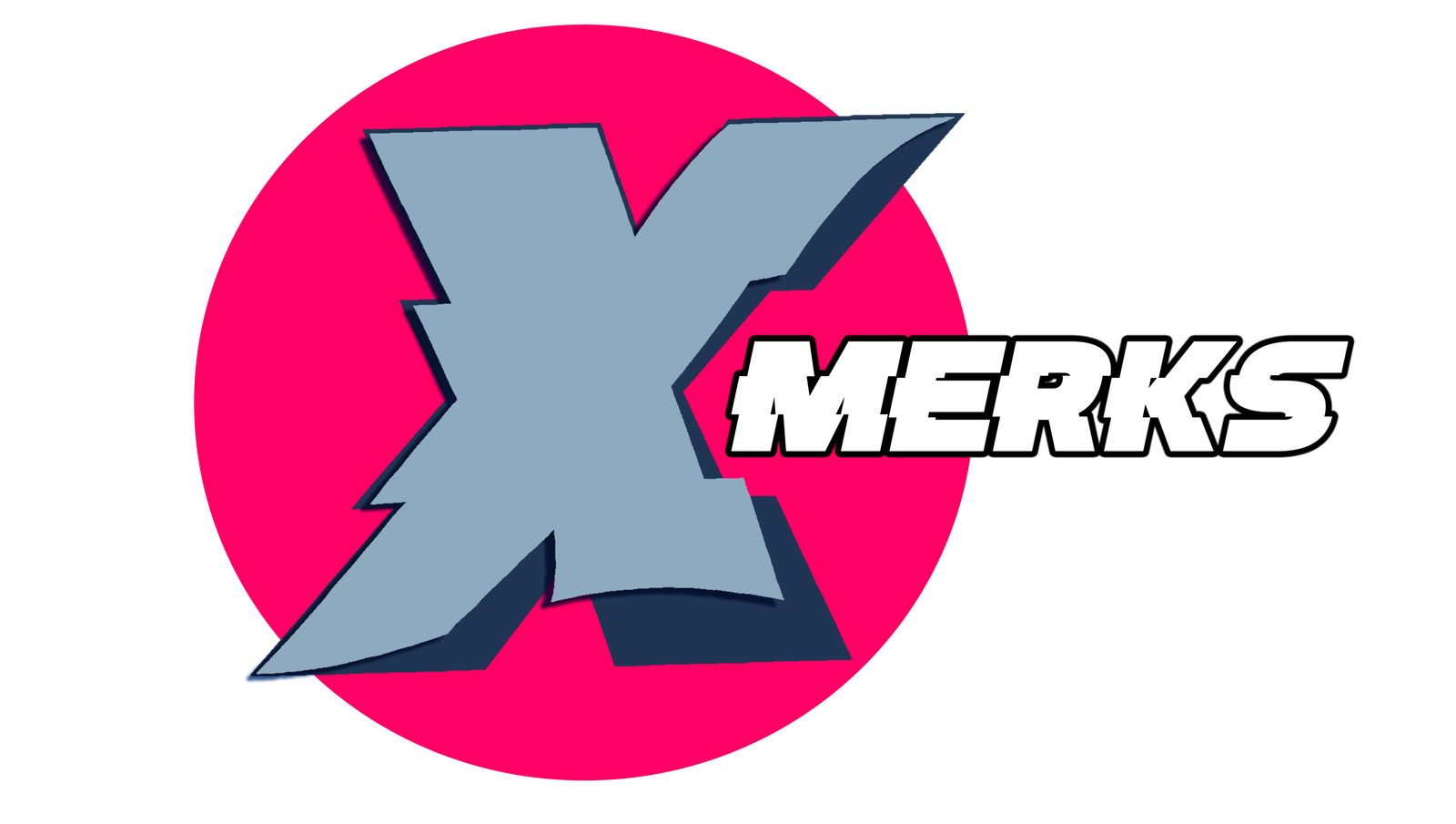Jazz guitarists are all about clean, expressive tones and intricate playing. That natural, unfiltered sound has always been a hallmark of jazz. But lately more and more jazz guitarists are discovering the power of guitar pedals to enhance their sound. That’s right—guitar pedals aren’t just for rock or experimental music anymore. They’re becoming an essential tool for jazz players who want to add depth, texture, and creativity to their performances.
Imagine a warm, resonant reverb adding spaciousness to each note, or a perfectly timed delay creating rhythmic echoes that enhance melodic lines. And with modulation pedals like chorus and flanger, you can introduce a lush, swirling quality to your tone that adds new layers of richness. These subtle but impactful effects allow jazz guitarists to explore new sonic territories while staying true to the genre’s expressive roots.
In this guide, we’ll break down the essential pedals every jazz guitarist should consider—like reverb, delay, and modulation—and even touch on specialized options like octave and compressor pedals. You’ll get the lowdown on each pedal’s function, how it fits into a jazz context, and top model recommendations that have proven to be favorites among jazz players. Ready to take your jazz guitar tone to the next level? Let’s get into it.
TL;DR: Essential Jazz Guitar Pedals
Jazz guitarists rely on various pedals to enhance their tone, add depth, and create expressive sounds. Here’s a quick summary of must-have pedals and recommended models:
| Pedal Type | Purpose | Recommended Models |
|---|---|---|
| Reverb Pedal | Adds space and ambiance to the guitar sound. | Strymon BigSky Reverb, Electro-Harmonix Holy Grail, TC Electronic Hall of Fame |
| Delay Pedal | Adds rhythmic complexity and enhances melodic lines. | Boss DD-7 Digital Delay, Boss DM-2W Analog Delay, TC Electronic Flashback 2, Strymon El Capistan |
| Compression Pedal | Maintains consistent volume levels and enhances sustain. | Keeley Compressor Plus, MXR Dyna Comp, Wampler Ego Compressor |
| Chorus Pedal | Adds depth and shimmering quality to the tone. | Boss CE-2W Waza Craft, Electro-Harmonix Small Clone, Strymon Ola |
By incorporating these essential pedals into your setup, you can achieve the dynamic, expressive, and nuanced tones that define jazz guitar playing.
Best Guitar Pedals for Jazz
Jazz guitarists seeking to enhance their sound will find certain guitar pedals indispensable. Among the essential pedals are reverb, delay, and compression, each offering unique benefits that contribute to the overall tonal quality and expressiveness of the jazz guitar.
Reverb Pedals: Creating Space in Your Sound
Reverb pedals play a crucial role in enhancing the sonic landscape of jazz guitar, adding depth, dimension, and ambiance to the performance. Essentially, reverb mimics the natural reflections of sound in a physical space, whether it be a small room or a vast hall. For jazz guitarists, utilizing reverb pedals can create a lush, immersive experience, making the guitar sound more resonant and full.
There are various types of reverb that musicians can use, each bringing its own unique character to the sound. Spring reverb simulates the reverberation created by springs in vintage amplifiers, offering a bright and somewhat metallic echo. This type of reverb is often favored for its classic, retro vibe, which can complement certain jazz styles very well.
Hall reverb mimics the sound of playing in a large concert hall, providing a rich and expansive sound. Its long decay time and smooth, natural reflections make it ideal for slower, more melodic jazz pieces. On the other hand, plate reverb produces a thick, dense sound by emulating the vibrations of a metal plate. This type of reverb is perfect for adding a warm, vintage feel to your jazz guitar tone.Here are three notable options:
1. Strymon BigSky Reverb
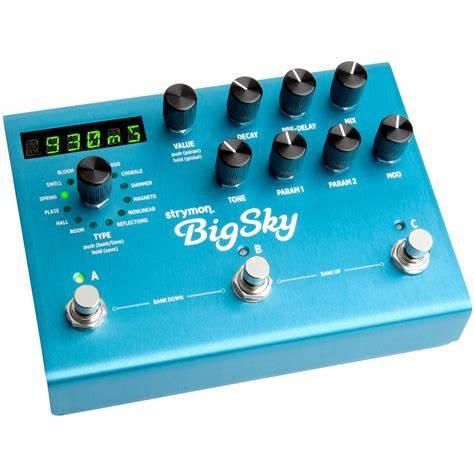
The Strymon BigSky Reverb offers a comprehensive suite of reverb effects, including Room, Hall, and Shimmer. Its high-fidelity sound and extensive customization options make it a favorite among professionals seeking versatile and immersive reverb tones.
2. Electro-Harmonix Holy Grail
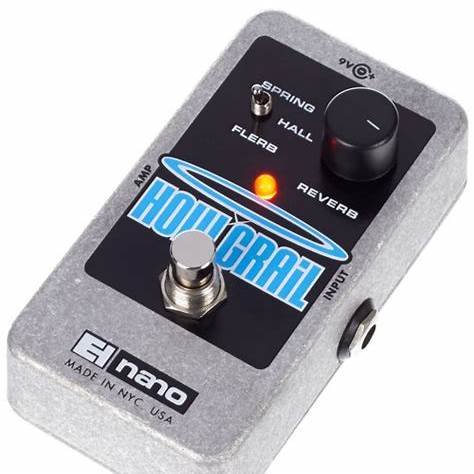
The Electro-Harmonix Holy Grail is renowned for its simplicity and rich reverb sounds. With settings like Spring, Hall, and the unique Flerb, it provides classic reverb tones that are easy to dial in, making it a reliable choice for those seeking straightforward, high-quality reverb.
3. TC Electronic Hall of Fame
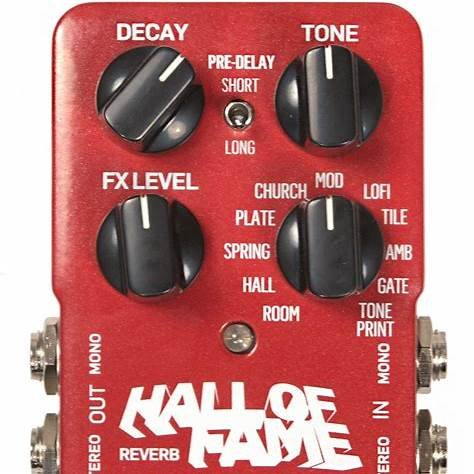
The TC Electronic Hall of Fame reverb pedal is celebrated for its versatility and TonePrint technology, allowing users to download custom reverb settings created by artists. It offers a wide range of reverb types, from subtle Room to expansive Church settings, catering to various musical styles and preferences.
Each of these pedals brings unique features to the table, catering to different needs and preferences. Whether you prioritize versatility, simplicity, or customization, there’s a reverb pedal here to suit your style.
In conclusion, incorporating a reverb pedal into your setup can significantly enhance your jazz guitar sound by adding space and depth. Understanding the different types of reverb and choosing a high-quality pedal can help you achieve the desired ambiance and texture, ultimately enriching your overall musical expression.
Delay Pedals: Adding Texture and Echo
Delay pedals are an essential tool for jazz guitarists seeking to add texture, depth, and echo to their soundscapes. By creating repeating echoes of the played notes, delay pedals can significantly enhance the complexity and richness of jazz guitar performances. There are several types of delay pedals, each offering unique characteristics and tonal qualities.
Analog delay pedals are known for their warm, natural-sounding repeats. They use bucket-brigade devices (BBD) to produce delays, resulting in a slightly degraded signal with each repeat, which many players find musically pleasing. Analog delays are perfect for adding a subtle, vintage feel to jazz guitar tones.
Digital delay pedals provide pristine, clear repeats that can be finely tuned and manipulated. These pedals
use digital signal processing (DSP) to offer a wide range of delay times and effects, such as reverse delay and modulation. For jazz guitarists who seek precise control and versatility, digital delay pedals are an excellent choice.
Tape delay pedals emulate the sound of vintage tape echo machines. These pedals reproduce the warm, organic sound of tape-based delays, complete with the characteristic wow and flutter. Tape delays are favored by jazz guitarists who appreciate a classic, analog-inspired ambience in their playing.
When used creatively, delay pedals can add layers of texture to jazz guitar performances. Short delay times can create a doubling effect, thickening the guitar tone, while longer delays can produce ambient, ethereal soundscapes. Experimenting with feedback levels and modulation settings allows guitarists to craft unique, signature sounds. Here are three top delay pedals favored by jazz guitarists:
1. Boss DM-2W Analog Delay
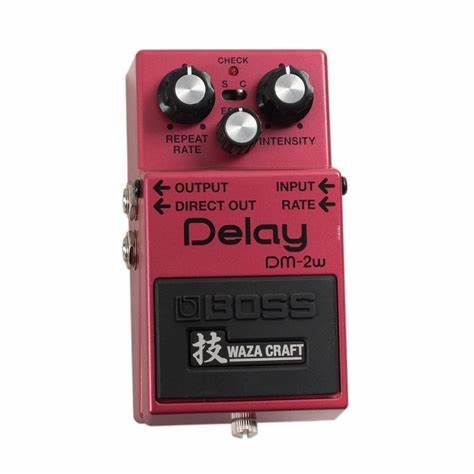
The Boss DM-2W Analog Delay is celebrated for its warm, analog repeats that add a rich, vintage character to your sound. Its straightforward controls and robust build make it a reliable choice for jazz musicians seeking classic delay tones.
2. TC Electronic Flashback 2
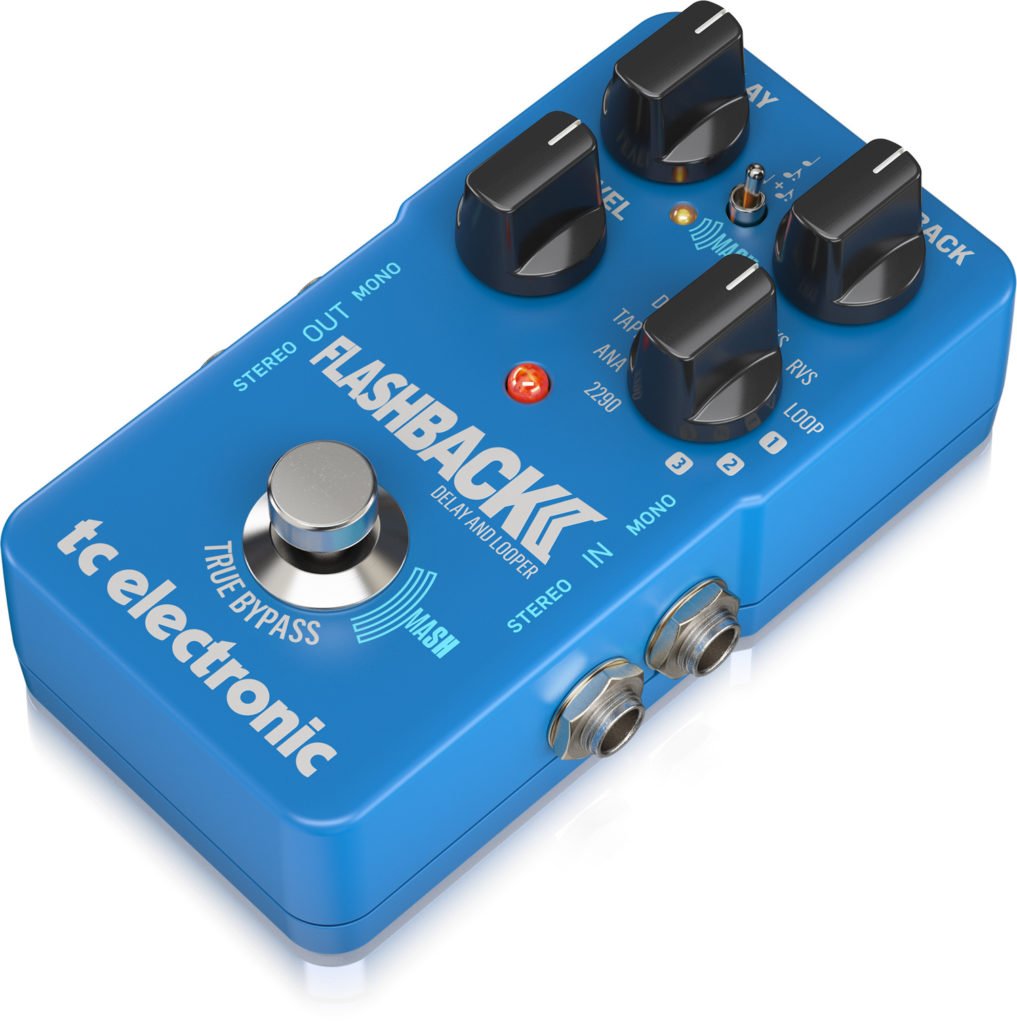
The TC Electronic Flashback 2 offers versatile digital delay modes, including tape, analog, and dynamic delays. Its innovative MASH footswitch provides expressive control, allowing for dynamic performances. This pedal is ideal for jazz guitarists looking to explore a wide range of delay effects.
3. Strymon El Capistan
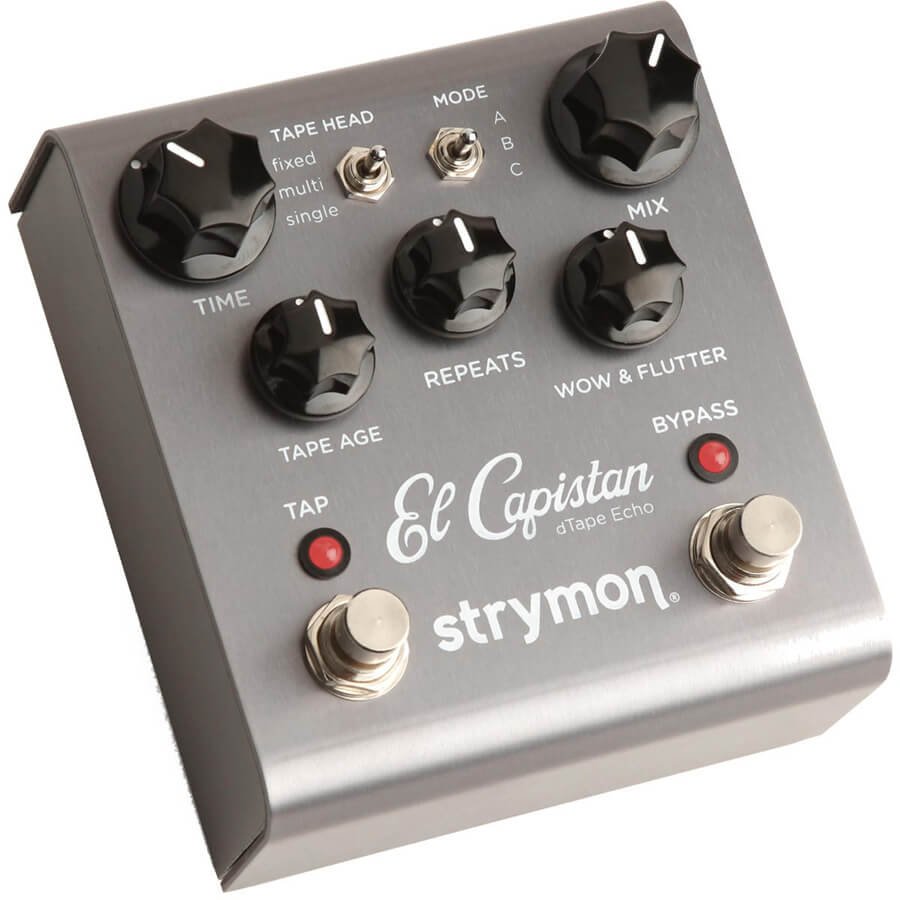
The Strymon El Capistan excels in tape delay emulation, delivering authentic tape echo sounds with adjustable tape age and wow & flutter controls. Its high-quality sound and extensive tweakability make it a favorite among jazz guitarists aiming for a vintage tape delay experience.
Compression Pedals: Enhancing Dynamics and Sustain
Compression pedals play a crucial role in shaping the sound of a jazz guitarist by evening out dynamics and increasing sustain. Unlike other genres where heavy compression is often employed, jazz guitarists typically favor subtle compression to maintain the instrument’s natural tone and expressiveness. The primary function of a compression pedal in jazz is to level out the volume differences between soft and loud notes, ensuring a more balanced and consistent sound. This is particularly beneficial in a live performance setting, where maintaining control over dynamics can be challenging.
Effective use of compression in jazz requires a delicate touch. Setting the compression too high can strip away the nuances and articulation that are essential to jazz guitar playing. Conversely, too little compression might not provide the desired level of control. The key is to find a balance where the compression smooths out the peaks and valleys in your playing without overshadowing the instrument’s inherent character. Most jazz guitarists prefer to set the attack and release times to fast and slow, respectively, to allow the initial transient of the note to pass through untouched, while the sustain is gently extended.
Here’s a look at three of the best compression pedals that provide the flexibility and subtlety ideal for jazz.
1. Keeley Compressor Plus
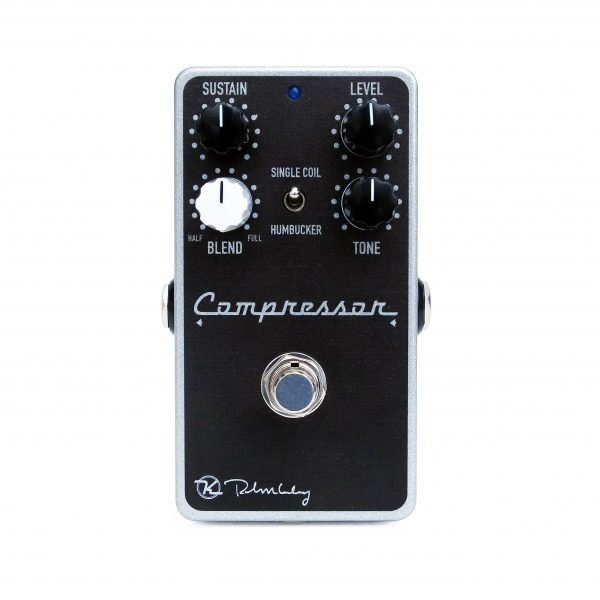
The Keeley Compressor Plus is highly regarded for its transparent, studio-quality compression. This pedal includes a blend control, which allows you to mix in your original signal with the compressed signal, preserving your guitar’s natural dynamics while adding just the right amount of sustain. Known for its versatility, the Keeley Compressor Plus is perfect for jazz guitarists who want a pedal that can adapt to different playing styles and performance needs.
2. MXR Dyna Comp
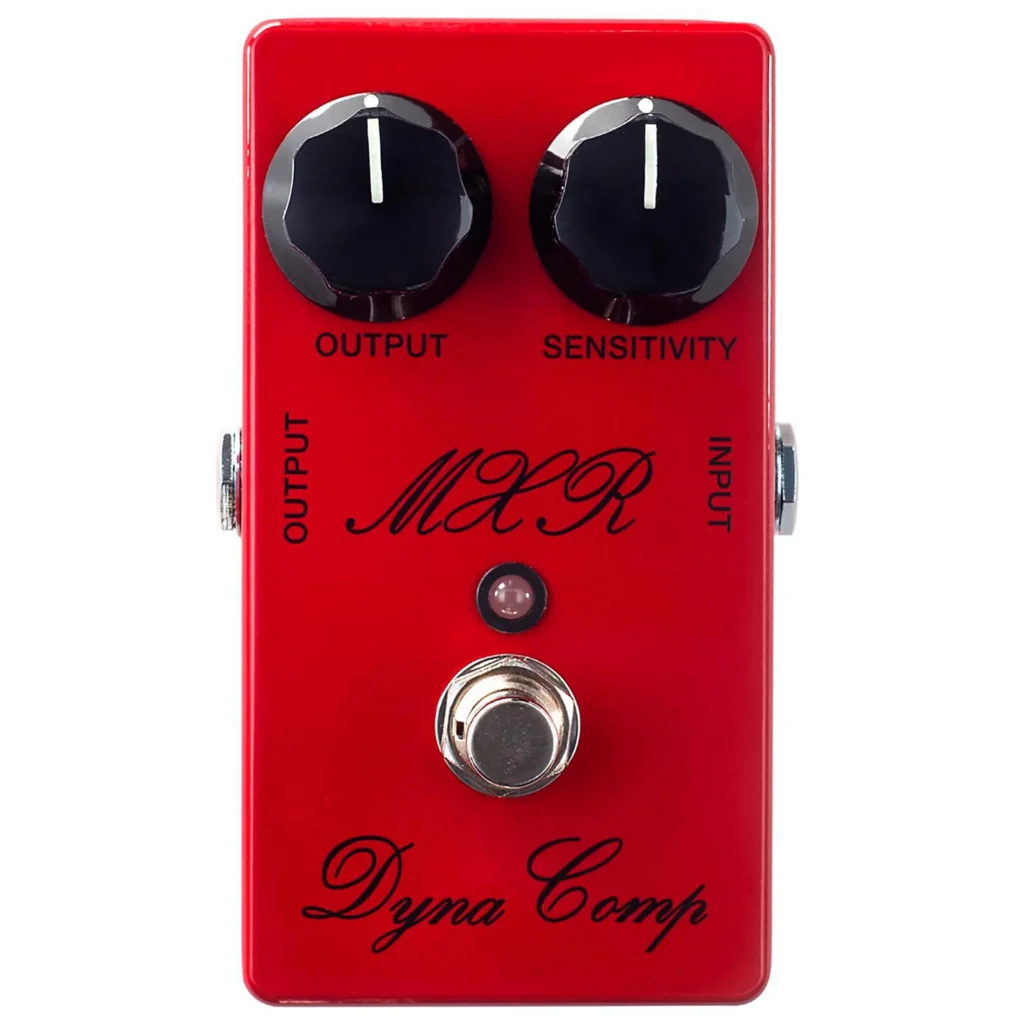
The MXR Dyna Comp is a classic choice for those who favor simplicity and effectiveness. With its straightforward controls, this pedal delivers warm, punchy compression without complicating the process. Jazz guitarists appreciate the Dyna Comp for its ability to add subtle sustain and smooth out dynamics, making it an excellent option for enhancing clean tones without overwhelming the natural character of the guitar.
3. Wampler Ego Compressor
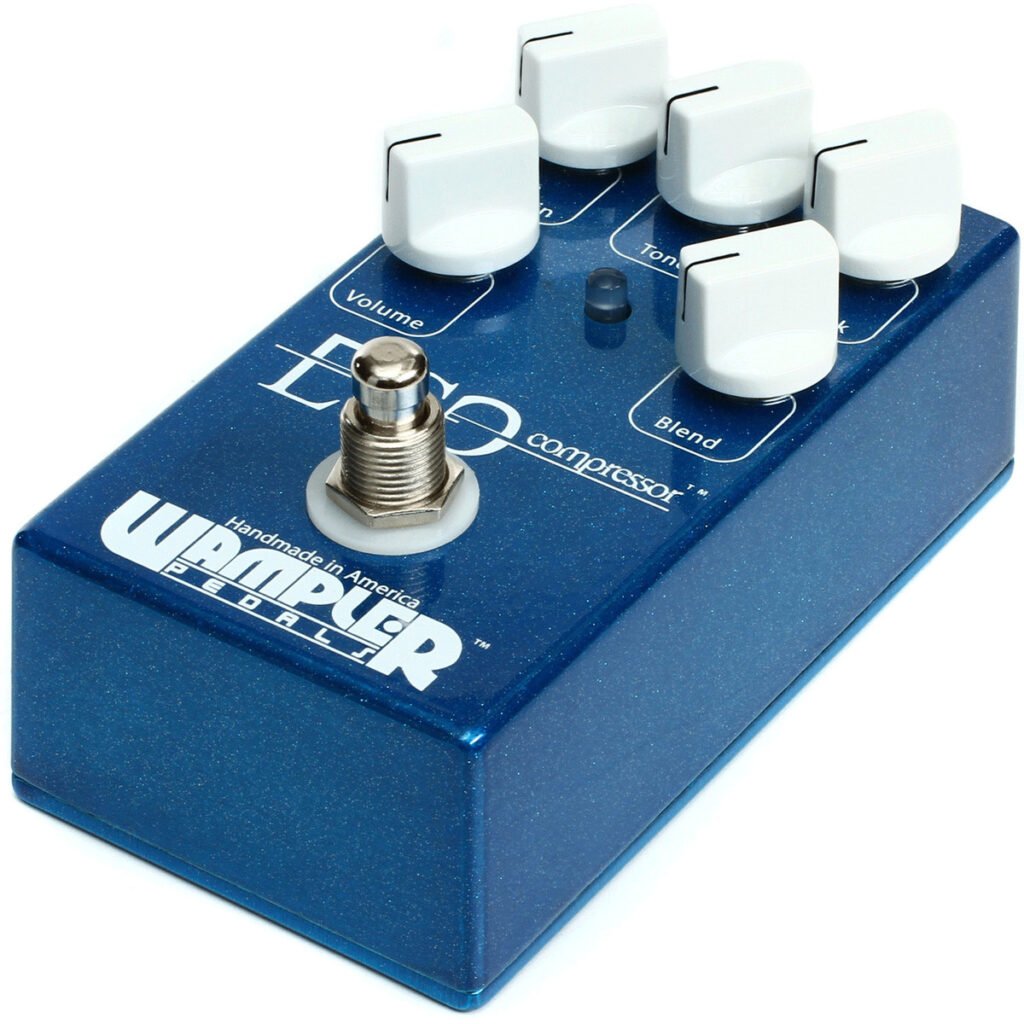
The Wampler Ego Compressor offers a blend control that enables players to mix their dry signal with the compressed signal, providing a highly customizable compression experience. This feature allows jazz guitarists to fine-tune their tone, balancing clarity with sustain. Known for its range of control options and transparent sound, the Wampler Ego Compressor is ideal for those seeking flexibility and precision.
Chorus Pedals: Adding Warmth and Movement
Chorus pedals are essential tools for jazz guitarists looking to add depth and complexity to their sound. By creating the illusion of multiple guitars playing simultaneously, chorus pedals introduce a lush and shimmering quality that can significantly enhance jazz performances. The core function of a chorus pedal is to duplicate the guitar signal, detune it slightly, and then blend it back with the original signal. This produces a rich, swirling effect that adds warmth and movement to the tone.
When selecting a chorus pedal for jazz, it’s important to consider various settings and parameters. Key controls typically include rate, depth, and mix. The rate setting adjusts the speed of the modulation, while the depth setting controls the intensity of the effect. The mix knob allows you to balance the wet (affected) signal with the dry (original) signal. Finding the right combination of these settings can help tailor the chorus effect to fit the subtleties of jazz guitar.
Some chorus pedals also offer additional features such as stereo outputs, which can create an even broader and more immersive soundstage. Jazz guitarists who play in larger ensembles or who perform solo can benefit from the spatial enhancement provided by these stereo capabilities. Additionally, some advanced models include tone controls, allowing further fine-tuning of the pedal’s effect to suit specific musical contexts.
Here are three standout chorus pedals that have garnered acclaim among jazz guitarists:
1. Boss CE-2W Waza Craft
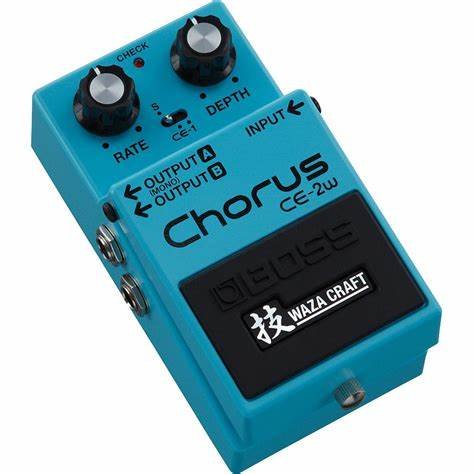
The Boss CE-2W Waza Craft is celebrated for its classic analog chorus sound and robust build quality. This pedal faithfully recreates the iconic CE-2 and CE-1 chorus effects, offering rich, warm tones that enhance the natural voice of the guitar. Its straightforward controls and durable construction make it a reliable choice for jazz musicians seeking timeless chorus effects.
2. Electro-Harmonix Small Clone
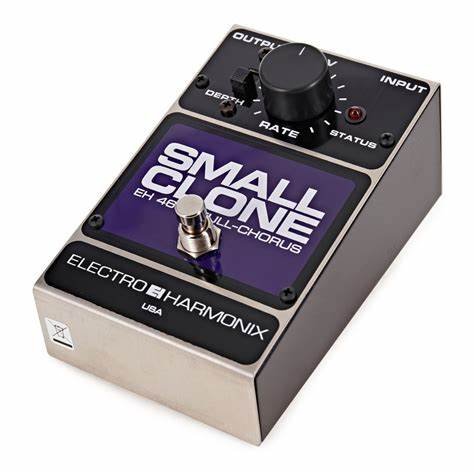
The Electro-Harmonix Small Clone offers a rich, full-bodied chorus effect with a simple, user-friendly interface. Known for its lush, shimmering tones, this pedal has been a favorite among guitarists for decades. Its single depth control allows for easy adjustment, making it ideal for players who prefer a straightforward approach without sacrificing sound quality.
3. Strymon Ola
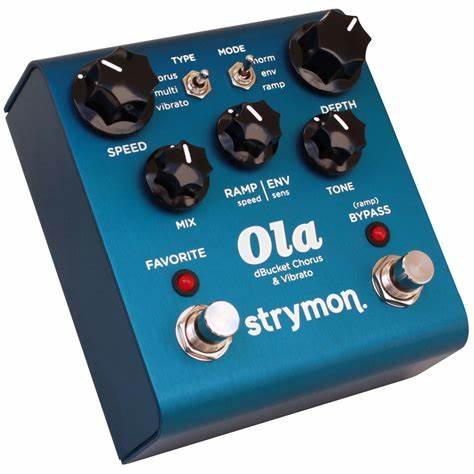
For those seeking a more modern and versatile pedal, the Strymon Ola delivers a wide range of chorus and vibrato effects with pristine digital clarity. Featuring multiple modulation modes and extensive parameter controls, the Ola allows for deep customization, enabling jazz guitarists to craft unique and expressive sounds. Its high-fidelity processing ensures that every nuance of your playing is preserved.
Incorporating a chorus pedal into your setup can significantly enrich your jazz guitar tone, adding both warmth and movement. By carefully selecting and dialing in the right chorus pedal, you can elevate your sound and explore new sonic territories within the realm of jazz guitar.
How to Build Your Pedalboard: Tips and Tricks
Building a pedalboard that suits jazz guitarists involves thoughtful planning and attention to detail. Here’s a guide to help you craft a setup that enhances your jazz tones:
1. Pedal Order
The sequence of your pedals significantly impacts your sound. A commonly recommended order is:
- Tuner: Start with a tuner to ensure your instrument is in tune before any effects are applied.
- Dynamic Effects: Place compressors and boosters next to shape your signal’s dynamics.
- Modulation Effects: Chorus and phaser pedals add texture and depth.
- Delay and Reverb: These effects define the ambient sound crucial in jazz.
Experimenting with different orders can lead to unique sounds, so don’t hesitate to try new configurations.
2. Power Supply
A reliable power supply is essential to avoid unwanted noise and ensure stable performance. Investing in a high-quality, isolated power supply reduces the risk of ground loops and interference, which can be detrimental to a clean jazz tone. Ensure that your power supply can accommodate the voltage and current requirements of all your pedals.
3. Cable Management
Maintaining a tidy and functional pedalboard is crucial. Use short, high-quality patch cables to connect your pedals, minimizing signal loss and clutter. Velcro strips and cable ties can help secure cables in place, preventing tangling and making it easier to swap out pedals when needed. Labeling your cables can also save time during setup and troubleshooting.
4. Regular Maintenance
Keeping your pedalboard in top shape requires regular attention. Check your connections periodically and clean the pedal surfaces to prevent dust and grime buildup. Experimenting with different pedal combinations can help you find the perfect jazz sound. Don’t be afraid to adjust settings and try new configurations; even small tweaks can lead to significant tonal improvements.
By following these tips, you’ll be well on your way to creating a versatile and reliable pedalboard that enhances your jazz guitar performances.
